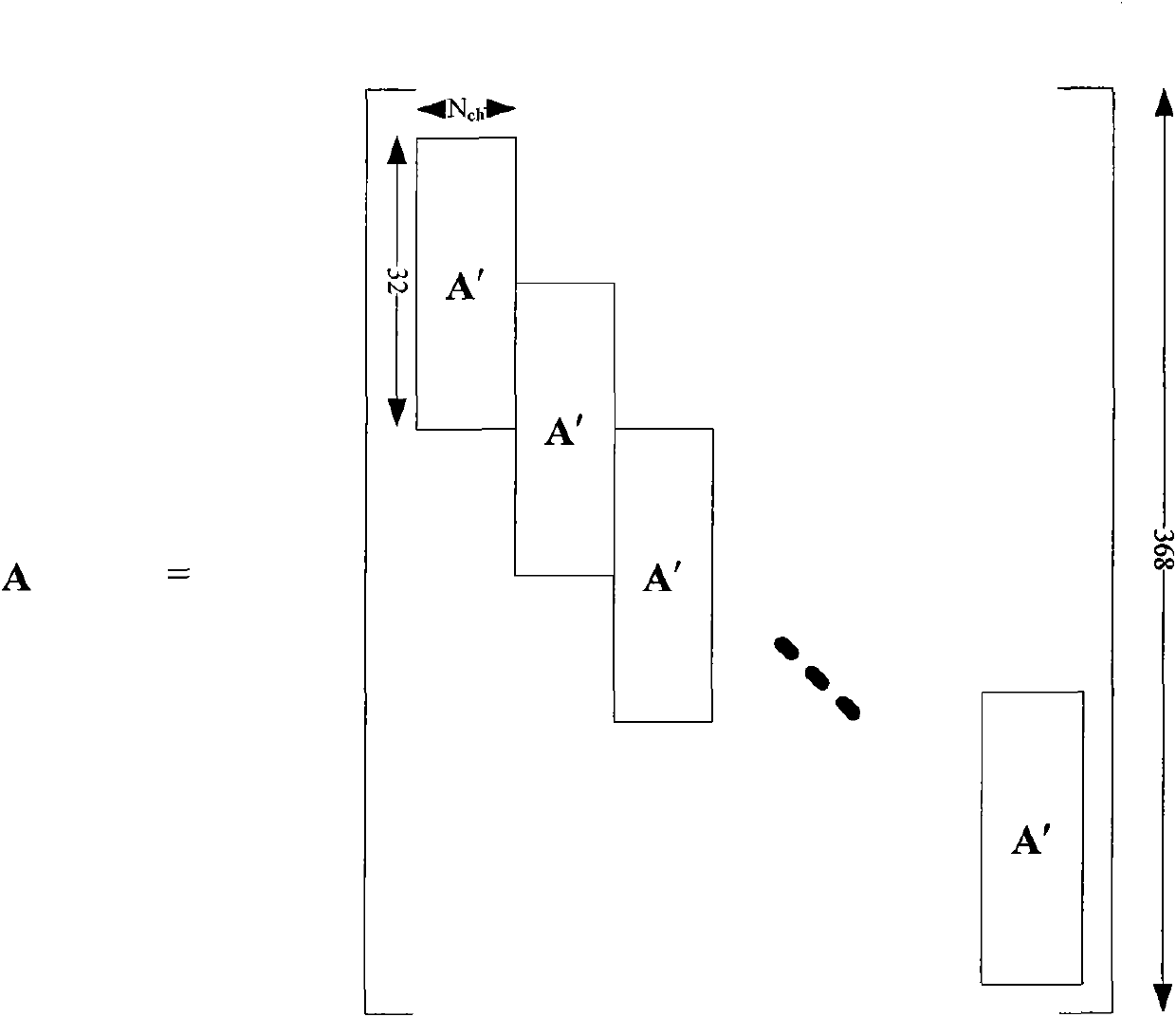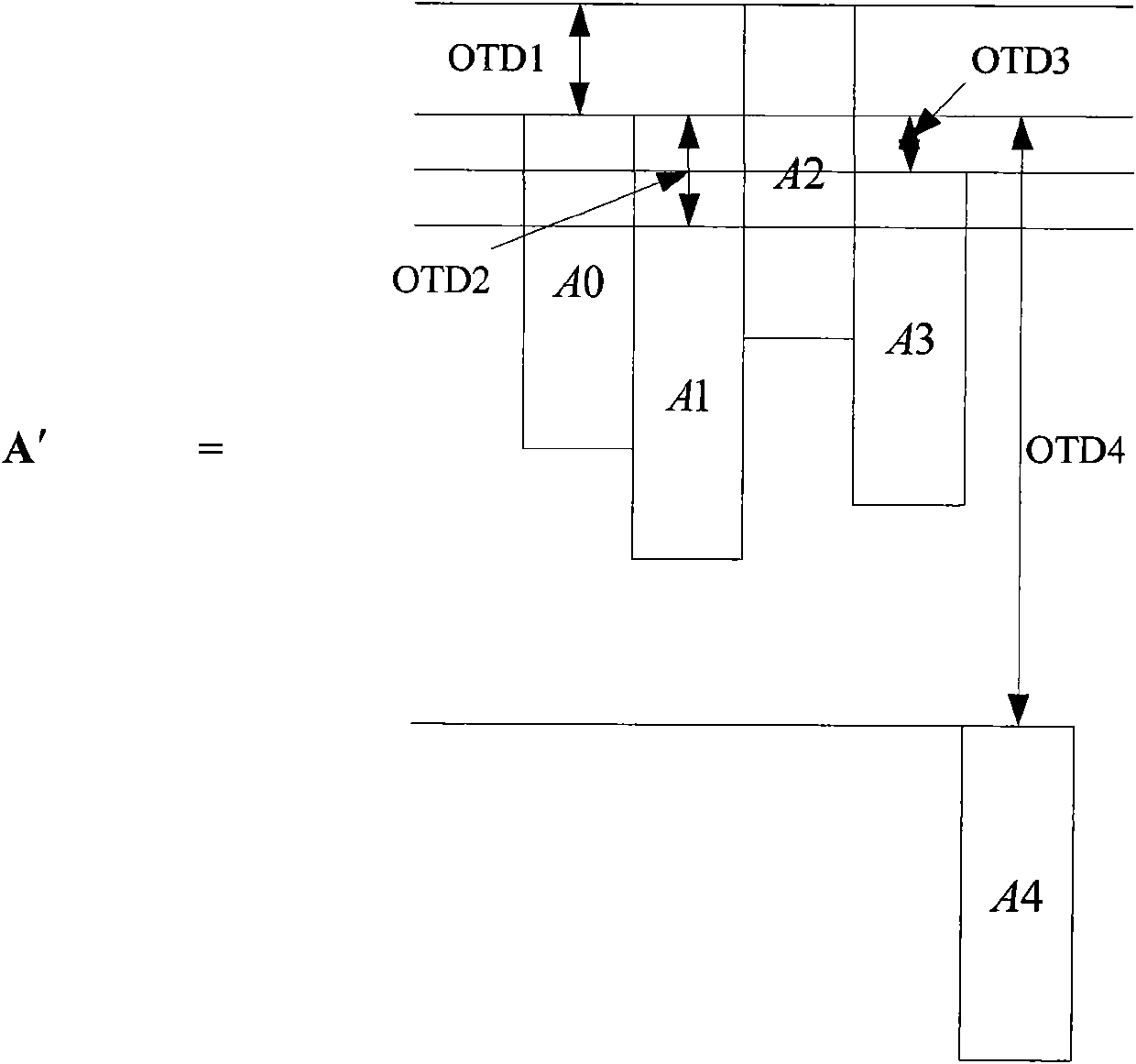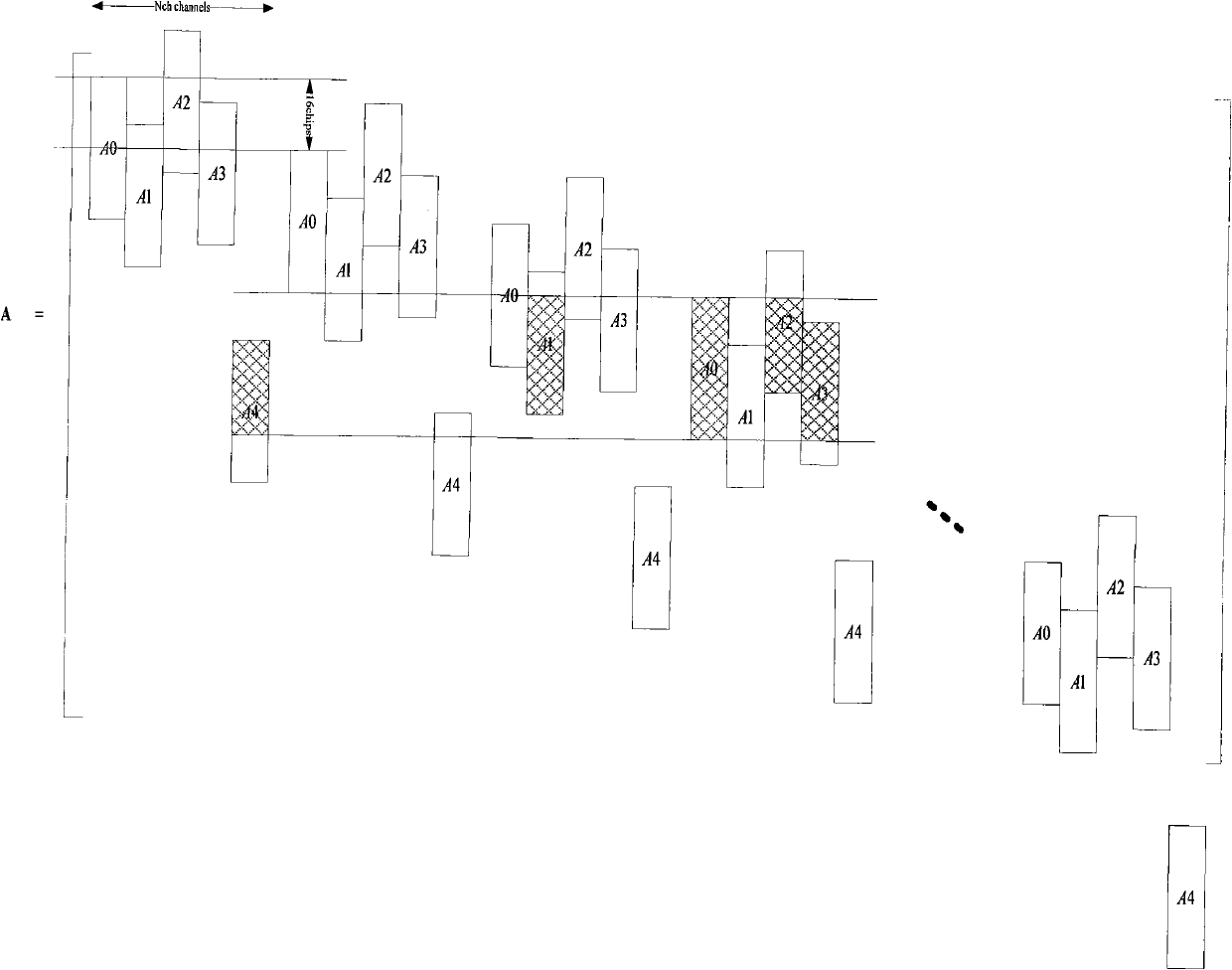Method for constructing TD-SCDMA multi-cell joint detection system matrix
A TD-SCDMA, system matrix technology, applied in the field of mobile communication, can solve problems such as difficult to adapt to distribution
- Summary
- Abstract
- Description
- Claims
- Application Information
AI Technical Summary
Problems solved by technology
Method used
Image
Examples
Embodiment Construction
[0031] The specific embodiments of the present invention will be further described below in conjunction with the accompanying drawings.
[0032] In a TD-SCDMA network with co-channel interference, it is necessary to jointly detect the signals of multiple cells at the receiver. First, it is necessary to use the Midamble codes of each co-frequency cell to perform channel estimation, and estimate the channel parameters of each cell from the base station to the receiving end. In addition, it is also necessary to estimate the observed delay difference of each interfering cell signal relative to the own cell signal. According to the observed delay difference of each co-frequency interfering cell and the channel estimation of each interfering cell, the effective channel estimation windows of different users in the interfering cell are selected to construct the co-frequency multi-cell system matrix.
[0033] Such as figure 2 As shown, the channel impulse response of each user in th...
PUM
 Login to View More
Login to View More Abstract
Description
Claims
Application Information
 Login to View More
Login to View More - R&D
- Intellectual Property
- Life Sciences
- Materials
- Tech Scout
- Unparalleled Data Quality
- Higher Quality Content
- 60% Fewer Hallucinations
Browse by: Latest US Patents, China's latest patents, Technical Efficacy Thesaurus, Application Domain, Technology Topic, Popular Technical Reports.
© 2025 PatSnap. All rights reserved.Legal|Privacy policy|Modern Slavery Act Transparency Statement|Sitemap|About US| Contact US: help@patsnap.com



